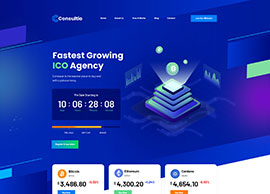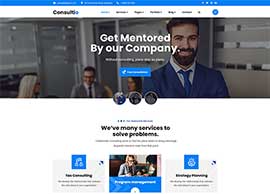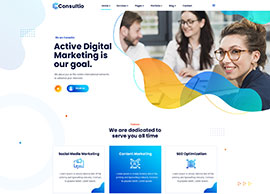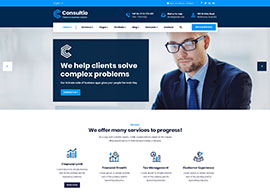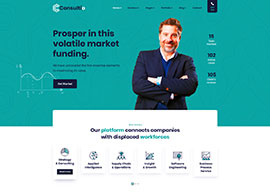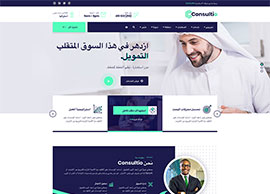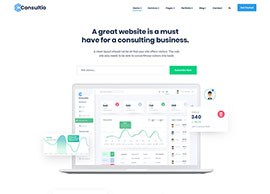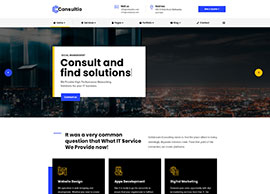In the ever-evolving landscape of artificial intelligence and machine learning, two models have been making waves due to their significant impact on large enterprises across various industries: Large Language Models (LLMs) and Structured Language Models (SLMs). These technologies have redefined how computers understand and generate human language, opening up new frontiers in natural language processing, data analytics, and customer interaction. For technology decision-makers, comprehending the capabilities, differences, and potential of LLMs and SLMs is critical in leveraging the latest advancements to meet their business objectives.
Artificial intelligence, particularly in the domain of natural language processing, has seen monumental progress with the advent of large language models and structured language models. Large language models are neural network-based systems that can process and generate human language on a massive scale, while structured language models provide a more granular, context-aware understanding of language, often within predefined domains or topics. Here, we will dive into what these models are, why they are valuable tools in the modern enterprise, and real-world examples.
Understanding Large Language Models (LLMs)
Defining Large Language Models
Large language models are at the forefront of the AI revolution, revolutionizing natural language processing by using massive amounts of data to understand and respond to human language. At their core, LLMs are based on the idea of deep learning—a subset of machine learning—that uses artificial neural networks to teach computers to carry out tasks by processing vast amounts of data.
LLMs contain billions of parameters, which are the “knobs” that the model can turn to change its predictions. These models are trained on a diverse range of texts, from books and articles to social media posts and more, enabling them to process and understand nuanced language. By associating the words or tokens in a sentence with each other, LLMs can learn to generate human-like text, answer questions, and perform a myriad of other language-related tasks.
Large language models can be applied to various scenarios. From improving search engine results to personal assistants, text and data summarization, sentiment analysis, and language translation, LLMs have the potential to revolutionize businesses’ ability to handle large volumes of data, make sense of complex inquiries. Moreover, they can automate tasks that were previously impossible for machines to carry out effectively.
Understanding Structured Language Models (SLMs)
Structured language models, on the other hand, are defined by their ability to process language within the confines of a specific structure or set of rules. While they may not have the vast scale of LLMs, SLMs have a more domain-specific focus, making them highly effective for certain types of tasks.
SLMs are designed to understand and produce text that adheres to predefined rules and structures, often within formal settings like legal documents or medical records, as well as in technical use cases such as code generation in software development. By doing so, they ensure that the language used is not only grammatically correct but also contextually relevant within a specific field.
Comparing Large Language Models and Structured Language Models
Despite their differences, LLMs and SLMs share some similarities. Both models utilize natural language processing, and they are trained on large datasets. The key distinction lies in the scope of training and applications. LLMs prioritize scale and generality, allowing them to perform a wide range of tasks but with less domain-specific accuracy. In contrast, SLMs specialize in context-specific tasks, ensuring precision and compliance.
LLMs excel in scenarios where a broad understanding of language is required, such as content creation, chatbots, or general customer service. SLMs, on the other hand, shine in applications that demand structured and specialized language, as found in legal contracts, technical documentation, and medical records. When it comes to choosing between the two, the nature of the task and the requirements of the domain should dictate the model’s selection.
When integrating language models into your organization, several factors should be considered. These include the complexity of language required for the task, the scale and diversity of data the model will be exposed to, the industry or regulatory constraints, and the need for precision. Understanding these factors will be pivotal in selecting the most suitable model for a given use case.
The sheer scale of large language models means they require significant computational power to train and operate. This presents challenges in terms of infrastructure, model optimization, and real-time performance. Similarly, the complex training pipelines for SLMs, which involve integrating domain-specific data and constraints, can be cumbersome and resource-intensive. The use of LLMs and SLMs also raises ethical concerns. Biases within training data can result in subjective outputs, and the opaque nature of these models can make it challenging to detect and mitigate such biases.
MILL5 Client Success Stories
To further illustrate the remarkable capabilities of LLMs and SLMs, here are some real-world applications from our clients:
- Healthcare Client – Clinical Documentation and Data Extraction: The SLM deployed by MILL5 was designed to extract structured information from unstructured data, thereby streamlining the clinical documentation workflow and improving overall efficiency. Powered by advanced machine learning, the system seamlessly analyzed medical notes and reports, extracting vital information such as patient diagnoses, treatments, and medication details with remarkable accuracy.
- Financial Services Client – Fraud Detection and Risk Assessment: For our financial services client we deployed an LLM to analyze vast amounts of financial data, social media, and other online information to identify patterns indicative of fraudulent behavior. Our client could utilize the LLM to analyze customer communications, transaction records, and market data for anomalies that may signal potential fraud. Additionally, we developed an SLM to assess structured financial data to quantify and mitigate risks associated with different transactions or investments.
- Manufacturing Client – Predictive Maintenance and Process Optimization: LLMs can play a crucial role in predictive maintenance by analyzing historical data, sensor readings, and maintenance logs to predict potential equipment failures. For our manufacturing client, we developed an LLM-powered system that analyzes patterns in machinery data and provides early warnings about components that are likely to fail, allowing for proactive maintenance.
Partnering with MILL5 for LLMs and SLMs Integration
For large enterprise companies looking to harness the power of LLMs and SLMs, partnering with a software consulting and development firm like MILL5 can offer invaluable expertise. MILL5 provides tailored solutions to integrate these language models into businesses, addressing technical and regulatory concerns while maximizing the models’ potential.
MILL5’s expertise in developing custom AI/ML solutions ensures that LLMs and SLMs are applied with precision and relevance to an organization’s needs. From understanding the business requirements to designing, training, and deploying sophisticated language models, MILL5 offers end-to-end support that can supercharge your enterprise’s language-based applications.
The Road Ahead with Language Models
The journey into the world of LLMs and SLMs is just beginning. As these technologies continue to evolve, we can expect further breakthroughs that will redefine how enterprises engage with their data, their customers, and their environments. Navigating this terrain will require not only technical prowess but also a keen understanding of the ethical and strategic implications of AI.
For large enterprise companies, the strategic adoption of LLMs and SLMs is a powerful differentiator that can transform operations, enhance customer experiences, and drive innovation. With the right approach, these language models can become indispensable assets in the quest for business excellence in the digital age.
For more information about how MILL5 can help you implement LLMs and/or SLMs into your organization, please email marketing@mill5.com or fill out the form below.
"*" indicates required fields






